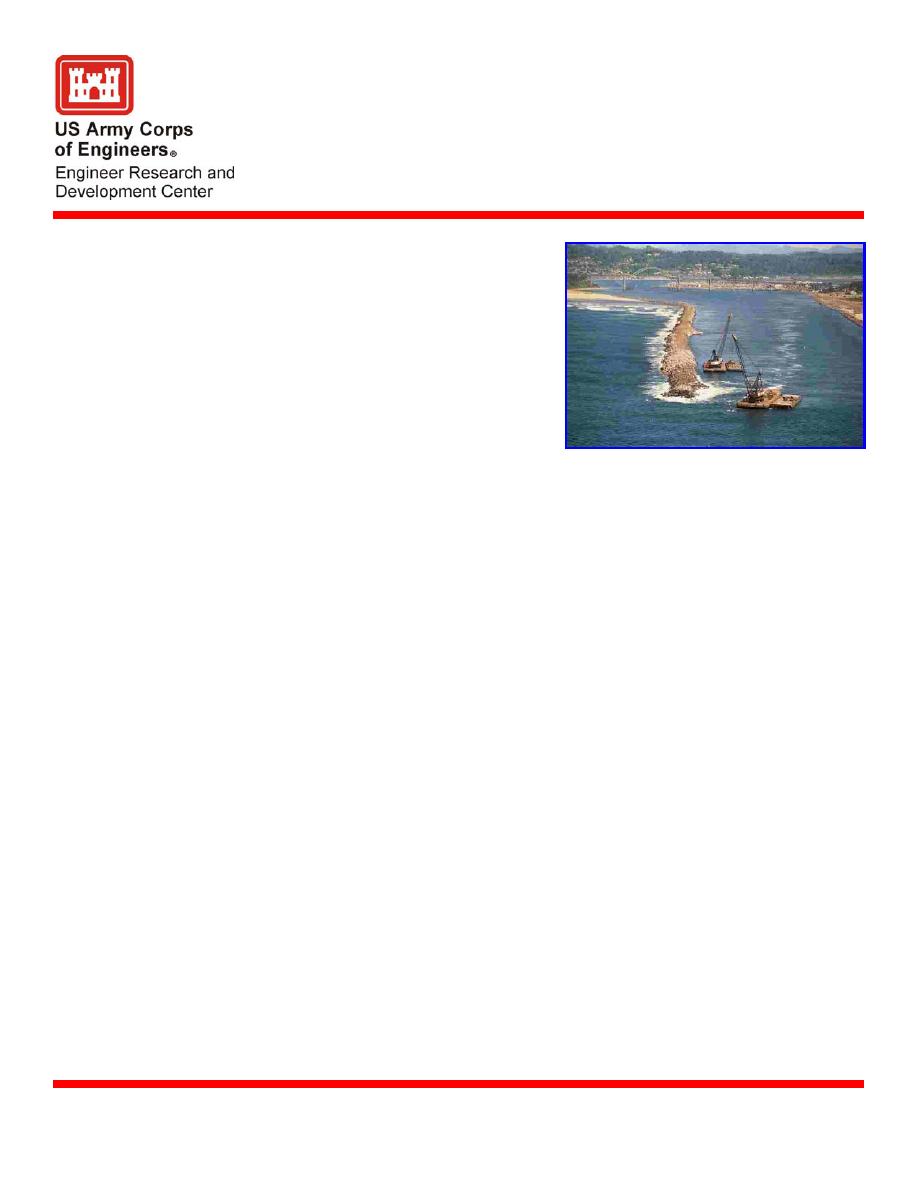
Prediction and Prevention of
Rubble Mound Structure Damage
The Corps of Engineers maintains over 500
Description
coastal structures. Most of the structures
are rubble mounds and have exceeded their
intended lifetime. Many are in need of
repair. Replacement cost on these
structures is on the order of M to
0M. Most of these structures sustain
small amounts of damage each year
because they were built to be "flexible"
under extreme storm conditions.
Prior to this R&D, there were few tools
Issue
available to predict damage development to
coastal rubble mound structures. There were
Repair of North jetty - Yaquina, Oregon
no math models available to predict damage
to large jetties, which are vital to
maintaining the nations channel entrances to harbors. This research effort was focused on
developing tools for predicting armor stone movement on coastal rubble mounds.
District Engineers and Consultants involved with rubble mound design.
Users
Products from this research include empirical math models for predicting erosion of rubble
Products
mounds as a function of time, wave conditions and water levels. Physics-based armor
stability equations were developed. Technical reports, journal papers, conference papers,
as well as CHETN and CEM additions were published. These methods have been
integrated into life cycle risk methods within a separate R&D effort. High-speed robotic
laser profilers and associated analysis software were developed to profile small-scale
coastal structure models in the laboratory. Historically, rod and level surveys of structures
in the lab were cost prohibitive and yielded spatially and temporally crude measurements.
With the new profiling technology, profile measurements are done at very high spatial and
temporal resolutions.
The data have resulted in improved understanding of armor stone movement.
Benefits
Measurements from this technology have led to new empirical formulas that predict the
rate of stone movement on breakwaters, revetments and jetties exposed to a series of
storms. Further, equations for predicting the variability of damage along the structure and
the variability in time have been developed. The relations are the first equations of this
kind and are crucial for performing life-cycle analyses of structures. This research has led
to a more physics-based approach to armor stability. The result is reduced costs of design,
more reliable designs, and an ability to predict damage.
Corps Program
Navigation Systems R&D Program
Dr. Jeffrey A. Melby, U.S. Army Engineer Research and Development Center,
Point of Contact
ATTN: CEERD-HN-H, 3909 Halls Ferry Road, Vicksburg, MS 39180-6199;
e-mail: . Additional information can be
U.S. Army Engineer Research and Development Center
December 2004
Coastal and Hydraulics Laboratory (Research)
www.erdc.usace.army.mil



 Previous Page
Previous Page
